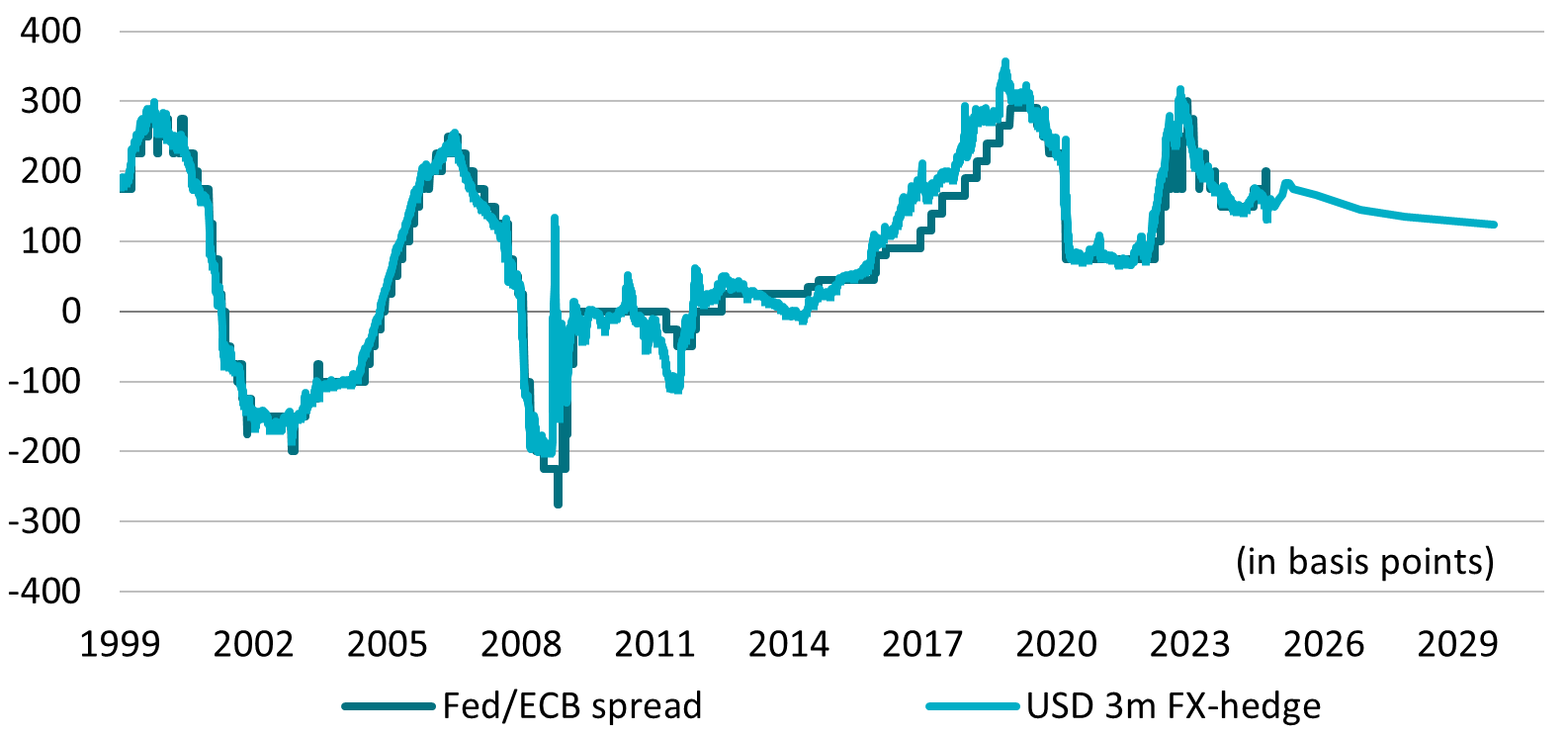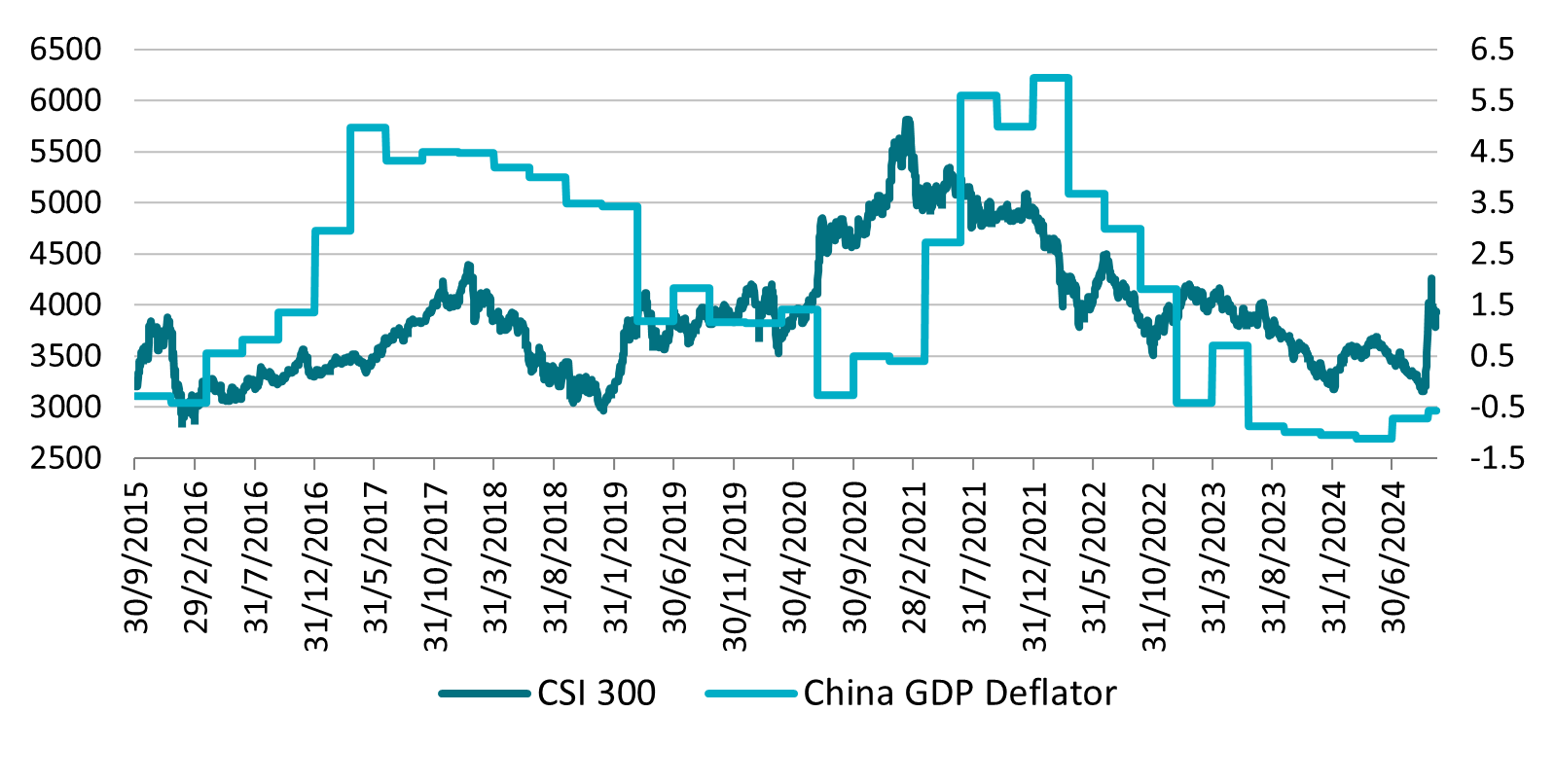
The view from the Core CIO Office: US economic resilience a key consideration for investors
- 05 November 2024 (5 min read)
KEY POINTS
Chris Iggo, CIO AXA IM Core
Will the US maintain its momentum with a new leader?
Whether the US economy’s resilience will endure following the presidential election is a key consideration for investors in US dollar-denominated financial assets. As of now, it is on track for a soft landing, which we believe should underpin solid returns from both equity and fixed income markets. There is a lot going well for the US. Banks are strong while corporate spending on artificial intelligence and other technologies could boost long-term productivity. The labour market, despite a modest rise in unemployment, is generating decent growth.
Policy uncertainty and how the US positions itself with the rest of the world are the key threats to this benign economic picture. Fiscal policy – which received little serious attention during the election campaign – will be a key consideration. Markets are worried the US government may need to pay higher coupons on ever-increasing amounts of Treasury bond issuance in coming years. In turn, monetary policy may be compromised, and a higher permanent level of interest rates would undermine current valuations in both credit and equity markets. If the economy stays strong, these concerns can remain in the background. But if growth slows, the fiscal day of reckoning may loom larger. In the early part of the new Donald Trump administration, indicators of how consumers and businesses spend will be key to whether markets continue to perform.
Alessandro Tentori, CIO Europe
The cost of currency hedging
Based on AXA IM forecasts we expect the spread between the US Federal Funds Rate (forecast to reach 4%) and the European Central Bank’s (ECB) deposit rate (forecast to reach 2%) to hit the 200-basis-point (bp) mark by the end of 2025. The cost of hedging US dollar-denominated risk into euros for a period of three months currently hovers around 155bp. Two years ago, the same hedge would have cost over 300bp. The reduction in hedging costs has been good news for European investors looking to expand into the dollar-denominated fixed income universe.
Dollar hedging costs are set to increase as the policy differential between the Federal Reserve and ECB is likely to widen during 2025. The chart shows the relationship between official policy rates and the cost of hedging currency exposure. The forward-implied trajectory already anticipates an increase in hedging costs of about 30bp by March 2025, before converging toward 130bp over the three-year horizon.
Hedging US dollar investments back into euros might be slightly more costly over the coming 12 to 18 months. Investors may want to take this information into account when formulating their 2025 asset allocation. However, this is by no means the only variable in our investment process.
Other factors – macroeconomics, balance sheet analysis, market structure and so on – continue to support the view that the US corporate bond market might continue to add value, despite the increase in foreign exchange hedging costs.
Monetary policy and USD-hedging costs

Source: Bloomberg
Ecaterina Bigos, CIO Asia ex-Japan
China’s equity valuations are less attractive as deflation persists
China’s recently implemented stimulus measures were welcomed by investors, leading to a double-digit equity market rally. With valuations repriced, investors are assessing each of the measures for their potential impact on growth, while eagerly awaiting details on additional fiscal stimulus. So far, the measures have largely offered supply-side support, aimed at removing some of the downside risks and with scope to alleviate China’s deflationary pressures. Decisive reflation and sustained recovery, however, depends on addressing both cyclical headwinds and structural imbalances.
The housing market remains the largest drag on the economy. While recent measures offer some relief by easing debt burdens and improving housing affordability, they are not sufficient to address the issue of excess inventory, and resolve the challenges faced by developers. Underwhelming direct fiscal support for the consumer, alongside a subdued property market, could mean a drawn-out battle against deflation. Imbalances in some sectors and local governments require a patient period of deleveraging and reforms.
Further, geopolitical tensions are likely to influence economic growth, notably through technology import restrictions and export tariffs. Together, these challenges are likely to impact Chinese corporations’ profit growth prospects. Countercyclical
macro policies need to continue and be implemented effectively to enable China’s structural economic rebalancing away from investment to consumption, and more towards services away from manufacturing. This would ultimately allow its economy to be more domestically oriented, and drive earnings growth from within.
China deflationary pressures persist

Source: Bloomberg, October 2024
Asset Class Summary Views
Views expressed reflect CIO team expectations on asset class returns and risks. Traffic lights indicate expected return over a three-to-six-month period relative to long-term observed trends.
| Positive | Neutral | Negative |
|---|
CIO team opinions draw on AXA IM Macro Research and AXA IM investment team views and are not intended as asset allocation advice.
Rates | Budgetary concerns and US politics suggest higher volatility even if rates in fair-value range | |
|---|---|---|
US Treasuries | Recent rise in long-term risk premium may persist until there is more economic clarity | |
Euro – Core Govt. | ECB easing cycle is supportive but there is risk of contagion from higher US rates volatility | |
Euro – Peripherals | Asset class presents opportunities and higher real yields than Bunds | |
UK Gilts | Financial challenges may mean an increase in government bond issuance | |
JGBs | Uncertainty over Bank of Japan policy normalisation path. Yen remains volatile | |
Inflation | Market pricing not discounting any post-election inflation shock |
Credit | Favourable pricing is increasing the asset class’s contribution to excess returns | |
|---|---|---|
USD Investment Grade | Without significant growth deterioration, credit to remain resilient | |
Euro Investment Grade | Modest growth and lower interest rates support credit’s income appeal | |
GBP Investment Grade | Returns supported by better growth and expectations of rate cuts | |
USD High Yield | Stronger growth, resilient fundamentals, and higher quality universe are supportive | |
Euro High Yield | Resilient fundamentals, technical factors and ECB cuts support total returns | |
EM Hard Currency | Higher quality universe, well-placed with US interest rate cuts commencing |
Equities | Soft landing to support stocks into year-end | |
|---|---|---|
US | Q3 earnings growth looks to be robust with financials and technology leading | |
Europe | Supported by attractive valuations, global growth, rate cuts and China’s potential recovery | |
UK | Clarity on fiscal and regulatory plans required for UK equities to do better | |
Japan | Resilient global growth is supportive; reforms, monetary policy key for sustained performance | |
China | Policy support has scope to lead to improved growth and market performance | |
Investment Themes* | Secular spending on technology and automation to support relative outperformance |
*AXA Investment Managers has identified six themes, supported by megatrends, that companies are tapping into which we believe are best placed to navigate the evolving global economy: Technology & Automation, Connected Consumer, Ageing & Lifestyle, Social Prosperity, Energy Transition, Biodiversity.
Disclaimer
This website is published by AXA Investment Managers Asia Limited (“AXA IM HK”), an entity licensed by the Securities and Futures Commission of Hong Kong (“SFC”), for general circulation and informational purposes only. It does not constitute investment research or financial analysis relating to transactions in financial instruments, nor does it constitute on the part of AXA Investment Managers or its affiliated companies an offer to buy, sell or enter into any transactions in respect of any investments, products or services, and should not be considered as solicitation or investment, legal, tax or any other advice, a recommendation for an investment strategy or a personalised recommendation to buy or sell securities under any applicable law or regulation. It has been prepared without taking into account the specific personal circumstances, investment objectives, financial situation, investment knowledge or particular needs of any particular person and may be subject to change at any time without notice. Offering may be made only on the basis of the information disclosed in the relevant offering documents. Please consult independent financial or other professional advisers if you are unsure about any information contained herein.
Due to its simplification, this publication is partial and opinions, estimates and forecasts herein are subjective and subject to change without notice. There is no guarantee such opinions, estimates and forecasts made will come to pass. Actual results of operations and achievements may differ materially. Data, figures, declarations, analysis, predictions and other information in this publication is provided based on our state of knowledge at the time of creation of this publication. Information herein may be obtained from sources believed to be reliable. AXA IM HK has reasonable belief that such information is accurate, complete and up-to-date. To the maximum extent permitted by law, AXA IM HK, its affiliates, directors, officers or employees take no responsibility for the data provided by third party, including the accuracy of such data. This material does not contain sufficient information to support an investment decision. References to companies (if any) are for illustrative purposes only and should not be viewed as investment recommendations or solicitations.
All investment involves risk, including the loss of capital. The value of investments and the income from them can fluctuate and that past performance is no guarantee of future returns, investors may not get back the amount originally invested. Investors should not make any investment decision based on this material alone.
Some of the services listed on this Website may not be available for offer to retail investors.
This Website has not been reviewed by the SFC. © 2025 AXA Investment Managers. All rights reserved.



